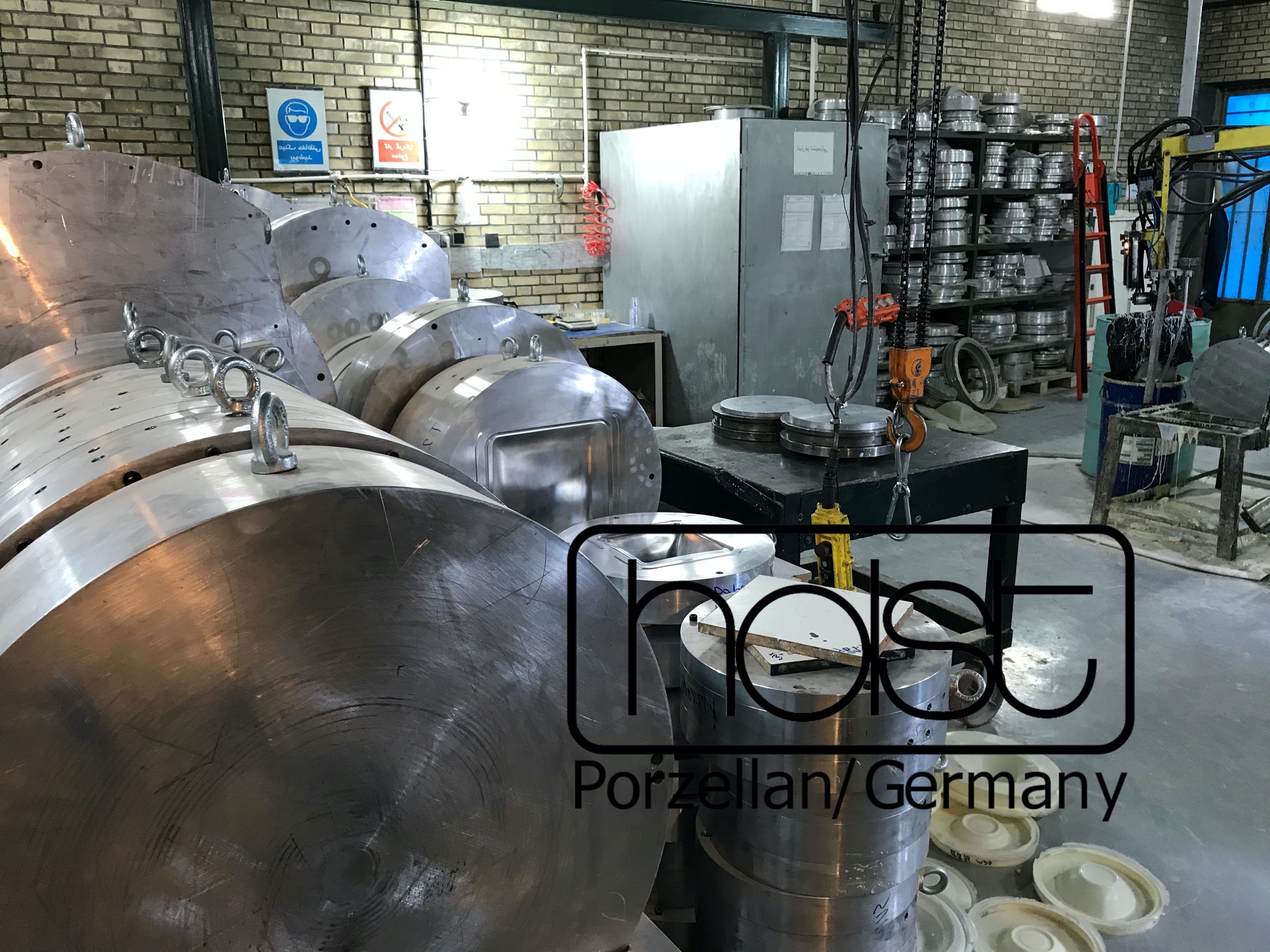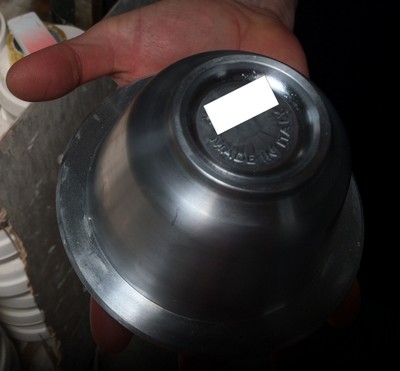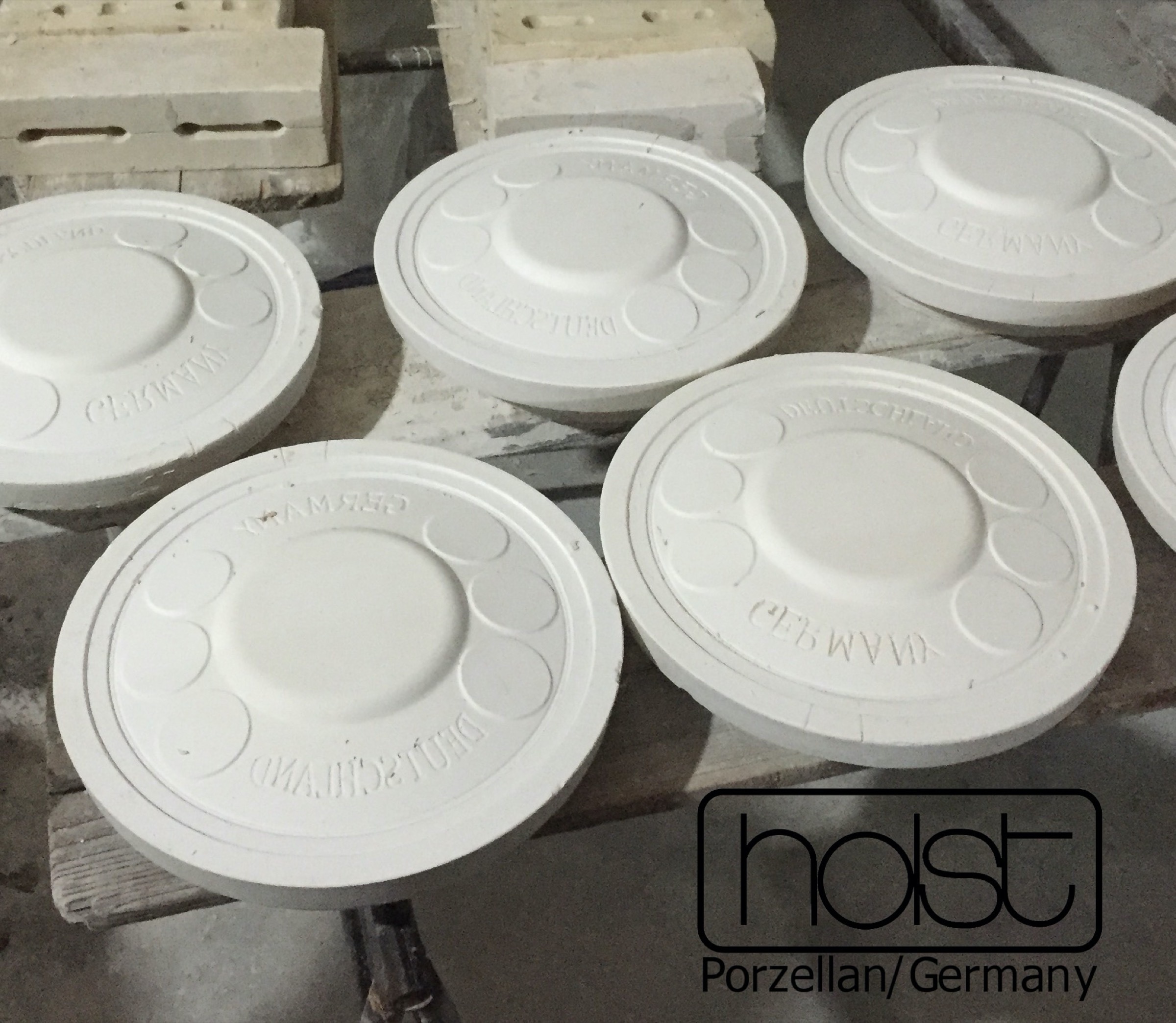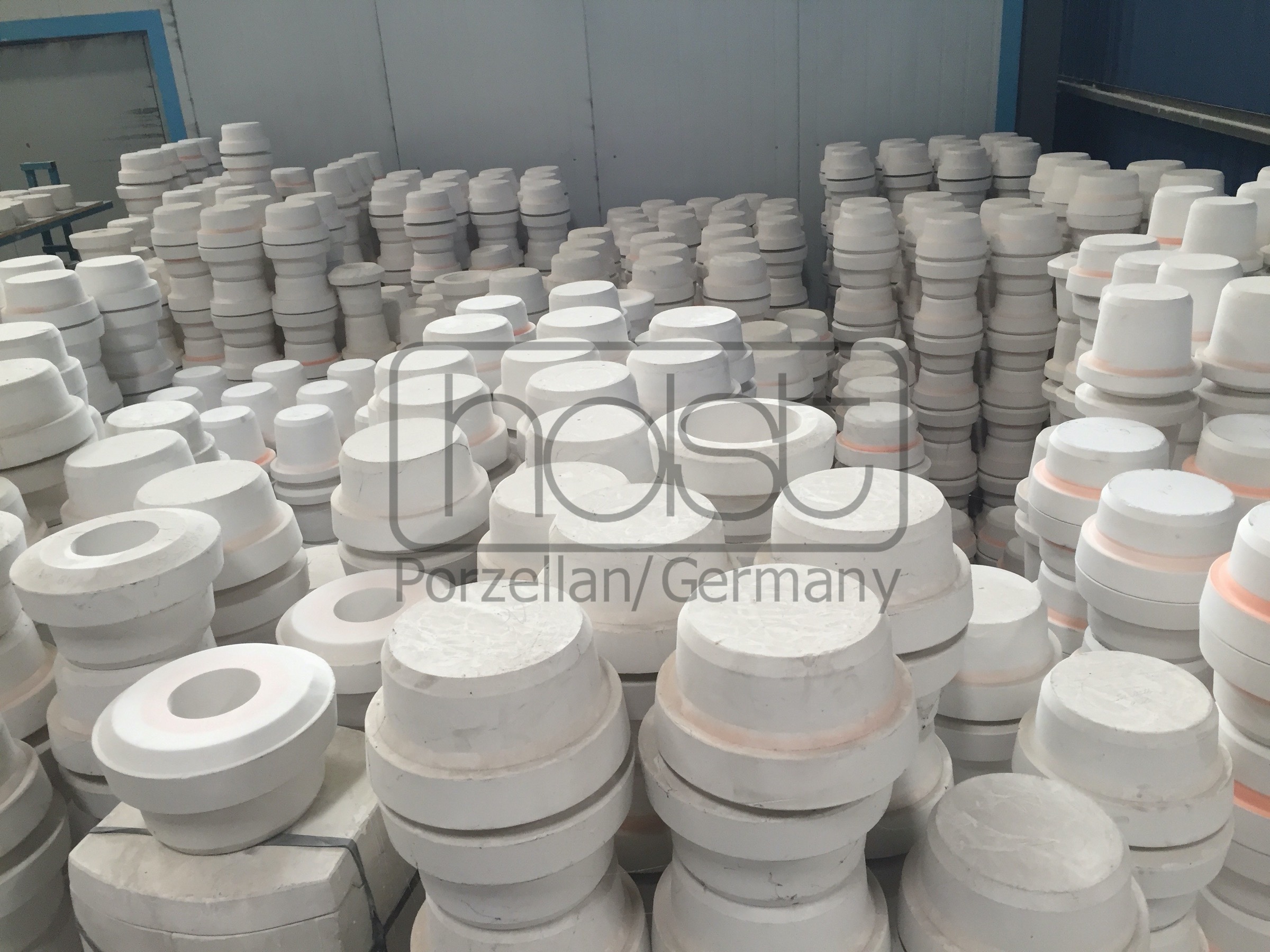Half-life period
Half-life as degree of utilisation of porcelain moulds
At Holst Porzellan, we define the half-life of moulds as the period of use of the respective porcelain mould. A distinction must essentially be made between the following:
- Pre-mould (no longer needed after the master mould has been created)
- Mother shape (represents a high value)
- Working moulds (usually wear out during production)
Once the zero pattern has been confirmed, the preform has no further functions to fulfil and therefore requires no further mention in this section.
Durability - half-life of mother moulds

(Mother mould bearing for isostatic porcelain production)
Mother moulds - as the name suggests - are the mother of all moulds. In the porcelain industry, the mother mould is used to make the working moulds. A mother mould should not be confused with the original mould, which has a completely different meaning and is unfortunately often incorrectly referred to as a mother mould. Mother moulds are made from durable, resilient materials that wear as little as possible when making working moulds.
Mother moulds are therefore usually made from stainless steel or special plastics as positive moulds. They are made from an impression of the master pattern and are produced with the utmost precision by the pattern maker in traditional porcelain production. If a mistake is made during realisation, this can quickly lead to the porcelain item losing its usability. The production of a master mould is a high and expensive art of porcelain making.
Image: Cheat mould made of stainless steel

Mother moulds can survive for many decades if they are stored in a dry place, with proper care and organisation. In the German porcelain industry, the saying goes: The mould stock is the capital of a factory. However, this rule of thumb quickly comes to an end if, for example, the composition of the raw materials and thus the degree of shrinkage or the type of moulding machine changes. Such changes quickly render a master mould worthless. The picture above shows a master mould for the production of working moulds for a cappuccino cup. This picture was taken in a production facility in China. In principle, this is nothing special, if it were not for the embossed "Made in Italy" bottom mark. This mould does not (!) come from Holst Porzellan.
With proper care and maintenance, a mother mould made of hardened stainless steel can produce a virtually infinite number of working moulds. In the porcelain industry, very different values are quoted when specifying the service life. Whether these different figures relate more to physical strength or to other components has not yet been revealed to us. There are figures ranging from several tens of thousands (for plastic moulds) to several million (for hardened steel moulds). In our opinion, the half-life of a master mould is more likely to be determined by business reasons, as in many countries these are considered fixed assets and therefore have an impact on the balance sheet total of a factory.
Every asset is subject to depreciation over a certain period of time. If the parent forms are fully depreciated, they form part of the hidden reserves. We will not go into detail here about the shenanigans that are often played with them. But together with the real gold (for gold decorations), they make up a considerable part of "balance sheet flexibility", which offers a great deal of room for manoeuvre. In any case, the holders of Rosenthal employee shares were not able to benefit from the treasure trove of hidden reserves when the AG went bankrupt - but that is another matter.

(Mother mould for cup handles)
A mother mould for traditional porcelain production (casting, pressing, jiggling, rolling) costs a fraction of that of a mould for isostatic pressing. In rank and order, here is the hit parade of mother mould costs:
- Complete mould set of an isostatic mould set, e.g. for a new plate
- Replacement set tool for an isostatic mould top, e.g. for a new relief pattern on the top side
- Replacement set tool for an isostatic mould base, e.g. for a new fit
- Mould set for an automatic die-casting press
- High pressure mould
- Casting mould
- Roll-over mould
- Twist-in mould
The range between 1st and 8th place is easily around EUR 12,000 - 15,000. Mould making is also very different. More.
Durability - half-life of work forms

Working moulds - usually made of plaster in conventional porcelain production - are used to shape the body, i.e. the actual production of the porcelain item. Working moulds are made from the master moulds and wear out during production. Their service life depends on the quality of the plaster and the synthetic resin additives, on the type of porcelain item to be produced and on the general production conditions, i.e. also on the humidity.
With a plaster mould for relief items (see picture above, Germany plate), the fatigue process begins after around 50 production runs. How often a mould is replaced depends on how pronounced the relief on the porcelain piece should be. The more filigree the relief, the faster the mould will fatigue. This explains why relief porcelain in conventional porcelain production must always be more expensive than smooth crockery items. This wear process is referred to as "mould consumption".
The working moulds for hydraulic pressing are made of special plastic. The task of the hygroscopic property of plaster - namely to remove the water from the mass - is performed in the high-pressure moulds by the pressure of the press plunger. Such plastic moulds are many times more durable than plaster moulds and therefore have a much longer service life.
The lifespan and, above all, the required number of working moulds (mould set) for a porcelain item depend on the type of production, the country, the type of tableware and other components. No generally applicable rules can be derived with regard to the service life - i.e. the half-life. Too many factors play a role and must be calculated individually. Nevertheless, we have endeavoured to form an average of the half-life of our work forms from the very different mix of material and production types in our range.
| Type of production | Yield pcs. (*) |
| Screwing in plaster mould | 60 - 350 |
| Overrolling (plaster mould) | 80 - 150 |
| Roll over relief (plaster mould) | 40 - 60 |
| Casting (plaster mould) | 40 - 100 |
| Pressing (traditional) | 50 - 130 |
| Pressing (mechanised) | 5,000 - 20,000 |
| Isostatic pressing | 80,000 - 150,000 |
(*) approximate figures on average

While manufacturers in China are primarily interested in using up the working moulds completely - i.e. wearing them out - most other production companies - especially those with a high number of moulds in production lines - store their working moulds, as these can generally be used for further production cycles. This is one of the reasons for defining the so-called MOQ (minimum order quantity).
